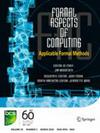抽象解释原则
IF 1.4
4区 计算机科学
Q3 COMPUTER SCIENCE, SOFTWARE ENGINEERING
引用次数: 29
摘要
几年前,这本评论书的作者和这本评论的作者乘坐了从格勒诺布尔到里昂机场的班车。作者将被告知书评人要了解他的图书项目的状况。现有草案有1000页。评论家向作者解释说,在他对事物本质的深刻见解和对教科书的长期经验中,有一些书可以改善世界,也有一些书正在被阅读。作者要求确认评论者是否认为即将出版的书将属于那些改善世界的书。让我跳过我是如何摆脱这种困境的。当被问及一本书是否会被阅读时,问题是由谁来阅读。引用作者的话,本书旨在为对抽象解释理论、形式方法的理解以及验证器和静态分析器的设计感兴趣的读者提供帮助。我的答案是,这是这些人的必读书目。从一开始就要明确一点:这位评论家不必相信抽象解释的价值,因为他最伟大的科学成就[5,6,8,10]是基于Patrick和Radhia Cousot关于抽象解释的基础工作。静态分析不同于。模型检查,用于验证程序的单独外部规范的正确性[9]。在模型检查中,用户同时提供要验证的程序和要检查程序的逻辑表达式或自动机。在静态分析中,有不同的时间,在设计抽象解释器时考虑到要从一类程序中提取的某些事实,也有程序员或验证工程师应用抽象解释器从特定程序中提取这些类型的事实的时间。这使得工作分工富有成效。第一阶段,非琐碎抽象口译员的设计需要高度胜任的专家,而第二阶段更容易,尽管有时也非琐碎。设计者需要识别抽象域本文章由计算机程序翻译,如有差异,请以英文原文为准。
Principles of Abstract Interpretation
Some years ago, the author of the reviewed book and the author of the review shared a ride in the shuttle from Grenoble to Lyon Airport. The author-to-be told the reviewer-to-be about the state of his book project. The existing draft had 1,000 pages. The reviewer explained to the author that in his deep insight into the nature of things and his long-term experience with textbooks there were books that improve the world and there were books that are being read. The author asked for confirmation whether the reviewer felt that the coming book would belong to those books that improve the world. Let me skip how I got myself out of this difficult situation. When asked whether a book will be read, the question is by whom. Citing the author, this book is intended for readers interested in the theory of abstract interpretation, the understanding of formal methods, and the design of verifiers and static analyzers. And my answer is, it is a must read for these groups of people. To make one thing clear from the beginning: This reviewer need not be convinced of the value of Abstract Interpretation as his greatest scientific achievements [5, 6, 8, 10] are based on the foundational work on Abstract Interpretation by Patrick and Radhia Cousot. Static analyses are distinct from . . .model checking, which verifies the correctness of a separate external specification of a program [9]. In model checking, a user supplies the program to be verified and the logical expression or the automaton against which the program is to be checked at the same time. In static analysis there are distinct times, a time when an abstract interpreter is designed with certain facts in mind to be extracted from a class of programs, and there is a time when the abstract interpreter is applied by programmers or verification engineers to extract these type of facts from particular programs. This enables a fruitful division of work. The first phase, the design of non-trivial abstract interpreters needs highly competent specialists, while the second phase is easier, although sometimes also non-trivial. The designer needs to identify abstract domains to
求助全文
通过发布文献求助,成功后即可免费获取论文全文。
去求助
来源期刊

Formal Aspects of Computing
工程技术-计算机:软件工程
CiteScore
3.30
自引率
0.00%
发文量
17
审稿时长
>12 weeks
期刊介绍:
This journal aims to publish contributions at the junction of theory and practice. The objective is to disseminate applicable research. Thus new theoretical contributions are welcome where they are motivated by potential application; applications of existing formalisms are of interest if they show something novel about the approach or application.
In particular, the scope of Formal Aspects of Computing includes:
well-founded notations for the description of systems;
verifiable design methods;
elucidation of fundamental computational concepts;
approaches to fault-tolerant design;
theorem-proving support;
state-exploration tools;
formal underpinning of widely used notations and methods;
formal approaches to requirements analysis.
 求助内容:
求助内容: 应助结果提醒方式:
应助结果提醒方式:


